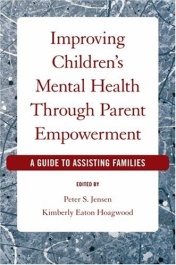From New York University Langone Health (NYULH): Department of Child and Adolescent Psychiatry, this is the second blog since embarking on part 2 of my Churchill Travelling Fellowship exploring the arts for health and wellbeing.
I arrived in New York City bang in the middle of Thanksgiving dinnertime following overnight delay. Almost all of New York’s diverse inhabitants observe Thanksgiving: nothing was open, the trains ran empty and the entire city resembled a ghost town or a post-apocalyptic movie. This surreal and isolated beginning was good preparation for being alone in New York City as a Churchill Fellow.
New York University Langone Health (NYULH): Department of Child and Adolescent Psychiatry
As innovative leaders in mental health, NYULH’s Department of Child and Adolescent Psychiatry stands out with its aim to educate the public about child and adolescent mental health, attend to the social determinants of health, and address and reduce the stigma associated with social and emotional difficulties.
NYU’s Advanced Training programs, which are a variety of undergraduate, graduate and post-doctoral studies, include a specific Child and Adolescent Mental Health Studies (CAMS) undergraduate college minor, the first of its kind in the country.
Vice Chair for research in the department and Director of the IDEAS Research Center, Professor Kimberly Hoagwood

Professor Hoagwood and I met to provide my Fellowship with insights into the translational research undertaken and disseminated by NYULH’s Department of Child and Adolescent Psychiatry. Built on an unusual and strong collaborative arrangement with New York State’s Office of Mental Health, the IDEAS Center conducts pragmatic and focused studies of immediate relevance to state policy-makers by developing findings and tools to support evidence-based decisions to guide policy and practice, and direct services for youth and families.
Mixed Methods
Professor Hoagwood and I discussed our shared view that while quantitative research programmes are necessary, to deeply understand the factors influencing the participation, engagement, adoption, and success of interventions – and how to improve them – qualitative data are also needed.
Peer Models
An aim of the IDEAS research center is to share professional knowledge among communities. Parents in the community are engaged in educational programmes and equipped with a broad and compassionate understanding of managing behavioural and emotional difficulties in their children. Parent advocates are employed as members of the research team to ground the studies in the realities facing parents raising children with emotional and behavioural problems.
Critically, Professor Hoagwood and her team are interested in how well these opportunities are received by the communities – and if not, why not. In one study of community programmes, the initial attrition rate (or drop-out) was 50%. Instead of starting again, redesigning, or concluding that the programme did not work, the team set about trying to understand what factors led to this drop-out rate, and address it. With a targeted approach addressing the factors that led to it, they were able to reduce the drop-out rate to under 10%.

Empowerment in mental health service delivery
I also learned that Professor Hoagwood researches seemingly disparate but highly connected topics, which has included animal and equine therapy, in a quest towards less clinical and more empowering approaches to wellbeing. This very much speaks to my own approach and belief in attending to wider and non-clinical factors influencing outcomes.
Links to UK intervention development
At the Spectrum Centre for Mental Health Research, Lancaster University, Professor Steven Jones, Director and the team are pursuing similar goals in assisting people in the community to manage their needs beyond the need to seek formal psychiatric treatment. For example, the REACT study is examining how services may offer a ‘coping toolkit’ for people whose relatives experience psychosis.
What’s Next?
Given my scope is mental health, the prison system in the US has featured heavily in my experience here. Over the next few weeks I’ll be unpacking a range of Fellowship activities including research-focussed meetings, participation in art-based services, my discovery of and engagement with the Society for Ethical Culture, and my visit with Literacy for Incarcerated Teens to Rikers Island, New York’s massive prison complex housing around 10,000 people.

0 comments on “Creating healthy communities: unusual collaborations from New York University”